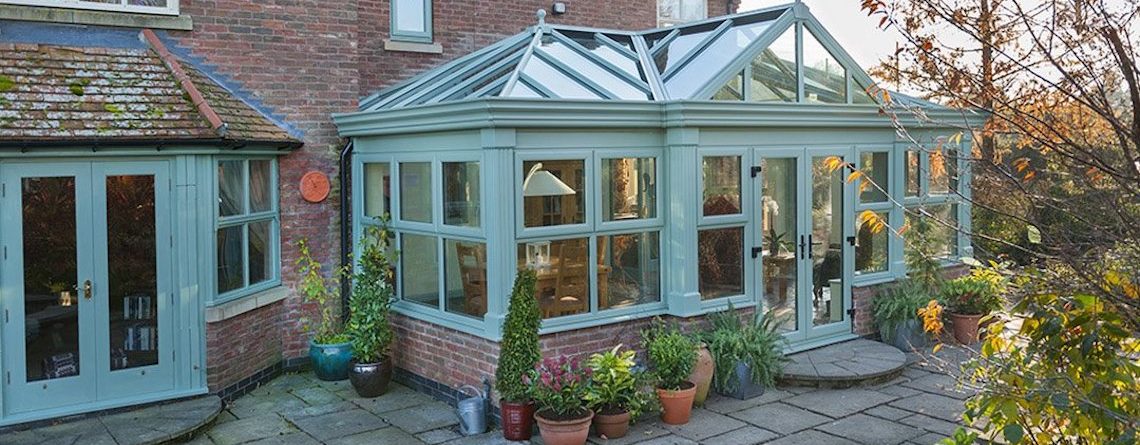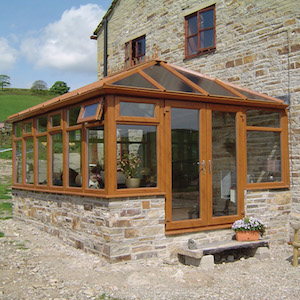Guide To Upvc Doors Windows: The Intermediate Guide Towards Upvc Doors Windows
The Enduring Appeal of uPVC Doors and Windows: A Comprehensive Guide
In the world of home improvement and building, the choice of windows and doors plays an essential function in forming both the visual appeal and functional efficiency of a structure. Among the myriad of products offered, Unplasticized Polyvinyl Chloride, more commonly called uPVC, has emerged as a frontrunner for windows and doors in modern homes and business spaces alike. This short article looks into the world of uPVC doors and windows, exploring their structure, benefits, types, and why they continue to be a favoured choice for house owners looking for resilience, energy effectiveness, and style.
Understanding uPVC: The Material Behind the Magic
uPVC means Unplasticized Polyvinyl Chloride. To understand what makes uPVC distinct, it’s helpful to first look at its base material, PVC (Polyvinyl Chloride). PVC is an extensively utilized synthetic plastic polymer understood for its versatility. Nevertheless, uPVC varies from basic PVC due to the ‘unplasticized’ element. This indicates that plasticizers, which are added to make PVC more flexible, are not utilized in uPVC. The absence of plasticizers results in a rigid, strong, and durable product that is remarkably appropriate for building applications, particularly for windows and doors.
The core composition of uPVC usually consists of:
- Polyvinyl Chloride Resin: The fundamental foundation, providing the standard structure and attributes of the product.
- Stabilizers: These are contributed to improve the material’s resistance to heat, UV radiation, and weathering, ensuring durability and colour retention.
- Modifiers: These improve impact resistance and workability, making the uPVC easier to manufacture and more robust in use.
- Pigments: These offer colour to the uPVC, enabling for a series of visual alternatives without the need for painting.
This unique formula offers uPVC its fundamental strength and resistance to different environmental aspects, making it a perfect choice for external doors and windows that are constantly exposed to the elements.
The Plethora of Benefits: Why Choose uPVC?
The popularity of uPVC doors and windows originates from a compelling combination of advantages they offer. These advantages extend beyond simple visual appeals, incorporating practical aspects like energy effectiveness, security, and upkeep. Here’s an in-depth take a look at the crucial benefits:
-
Energy Efficiency: In a period of growing ecological awareness and intensifying energy expenses, energy efficiency is vital. uPVC masters this domain.
- Thermal Insulation: uPVC is a naturally poor conductor of heat. When crafted into doors and windows, particularly with double or triple glazing, they create an extremely reliable thermal barrier. This insulation minimizes heat transfer, keeping homes warmer in winter season and cooler in summertime.
- Minimized Energy Bills: By maintaining a consistent indoor temperature, uPVC windows and doors considerably lower the reliance on heating and cooling systems, causing lower energy usage and consequently, lowered energy costs.
- Air Tightness: Properly set up uPVC frames develop an airtight seal, avoiding drafts and unchecked air leakage. This more contributes to energy effectiveness and a more comfortable indoor environment.
-
Sturdiness and Longevity: uPVC is renowned for its robust nature and capability to withstand the test of time.
- Weather Resistance: Unlike wood, uPVC does not rot, warp, or rust. It is extremely resistant to rain, wind, sun, and severe temperature level changes, making it perfect for all climates.
- Resistance to Pests and Fungi: uPVC is impervious to insect invasions and fungal growth, eliminating common problems associated with wooden frames and ensuring long-term structural integrity.
- Low Maintenance: uPVC new windows and doors and doors are exceptionally low-maintenance. They do not require painting, staining, or sealing. Routine cleaning with soap and water is normally adequate to keep them looking beautiful for many years to come.
-
Enhanced Security: Security is a main concern for property owners. uPVC windows and doors are designed with security in mind.
- Robust Construction: The inherent strength of uPVC material supplies a solid barrier against required entry.
- Multi-Point Locking Systems: uPVC frames easily accommodate sophisticated multi-point locking systems, significantly enhancing security compared to conventional locking systems.
- Enhanced Frames: Many uPVC doors and windows include steel or aluminium supports within the frame, additional reinforcing their strength and resistance to required entry.
-
Visual Versatility: While functionality is crucial, aesthetic appeals can not be ignored. uPVC provides a wide variety of designs and finishes to complement varied architectural styles.
- Range of Styles: uPVC windows and doors are readily available in numerous designs, from classic casement windows to contemporary sliding doors, enabling house owners to find alternatives that fit their architectural preferences.
- Colour and Finish Options: uPVC is not limited to basic white. Modern production methods enable for a spectrum of colours and surfaces, consisting of woodgrain results, supplying the appearance of natural products with the advantages of uPVC.
- Adjustable Designs: uPVC can be quickly made into bespoke sizes and shapes, accommodating distinct design requirements and architectural designs.
-
Cost-Effectiveness: While the initial investment in uPVC doors and windows may be similar to or somewhat greater than some other materials, their long-term cost-effectiveness is indisputable.
- Reduced Maintenance Costs: The minimal maintenance requirements equate to considerable cost savings over the life expectancy of uPVC doors and windows, getting rid of the expenses related to painting, repairs, and replacements common with other materials.
- Energy Savings: Lower energy bills due to exceptional insulation offer ongoing monetary advantages, recouping the initial investment gradually.
- Long Lifespan: The remarkable durability of uPVC guarantees a long service life, preventing regular replacements and using excellent value for money in the long run.
-
Sound Insulation: Noise contamination is a growing issue, especially in metropolitan environments. uPVC windows and doors provide outstanding sound insulation homes.
- Noise Reduction: The thick nature of uPVC, combined with double or triple glazing, efficiently dampens external sound, producing a quieter and more tranquil indoor environment.
- Enhanced Comfort: Reduced noise levels contribute to a more comfortable and peaceful home, improving total well-being.
-
Ecological Friendliness: In a significantly eco-conscious world, the environmental effect of building products is an essential consideration. uPVC presents several environmentally friendly characteristics.
- Recyclability: uPVC is recyclable, and numerous makers are actively associated with recycling programs, minimizing landfill waste and promoting circular economy concepts.
- Lead-Free Options: Modern uPVC formulations are typically lead-free, mitigating health and environmental concerns associated with lead-based products.
- Energy-Efficient Production: The manufacturing procedure of uPVC is fairly energy-efficient compared to some other products, further boosting its environmental profile.
Types of uPVC Doors and Windows: Catering to Diverse Needs
uPVC is a flexible material, providing itself to a range of door and window styles, each serving particular practical and visual functions.
uPVC Door Types:
- uPVC Front Doors: These are the primary entry points to a home, created to be both welcoming and secure. They frequently feature decorative panels, glass inserts, and robust locking systems.
- uPVC Back Doors: Typically resulting in gardens or yards, these doors focus on security and functionality, often with easier styles than front doors but maintaining the same durability and energy effectiveness.
- uPVC Patio Doors: Designed to supply seamless access to outdoor areas, patio doors can be found in different configurations:
- uPVC Sliding Patio Doors: These doors slide horizontally, conserving space and offering broad openings. They are perfect for maximizing light and views.
- uPVC French Doors: These doors include two adjacent doors that open outwards (or inwards), creating a grand, standard appearance and a wide, unobstructed opening.
- uPVC Bi-fold Doors: These doors fold back in sections like concertina doors, creating a really broad opening and effortlessly connecting indoor and outdoor spaces.
uPVC Window Types:
- uPVC Casement Windows: These windows are hinged on the side and open outwards, offering exceptional ventilation and a clear, unblocked view. They are understood for their airtight seals and energy performance.
- uPVC Tilt and Turn Windows: These versatile windows can both tilt inwards for ventilation and fully open inwards for simple cleansing and maximum air flow. They are popular for their usefulness and safety features.
- upvc Doors Windows Sliding Windows: Similar to moving doors, these windows include sashes that move horizontally within the frame. They are space-saving and easy to run, ideal for areas where outwards opening windows are not feasible.
- uPVC Awning Windows: Hinged at the top and opening outwards, these windows supply ventilation even during light rain, as they develop a protective awning.
- uPVC Fixed Windows: These windows do closed and are developed entirely to let in light. They are typically used in combination with other window types to develop big glazed locations.
Setup and Maintenance: Ensuring Longevity and Performance
While uPVC is naturally long lasting, correct setup is important to optimizing its benefits and ensuring long-lasting performance. Professional installation by experienced fitters is extremely recommended to ensure right fitting, airtight seals, and proper operation of locking systems.
Maintenance of uPVC windows and doors is incredibly simple. Routine cleaning with a mild detergent and water is generally sufficient to keep them tidy and looking their best. Lubing hinges and locking mechanisms periodically can ensure smooth operation. Avoid utilizing abrasive cleaners or severe chemicals, as these can harm the uPVC surface.
Choosing the Right uPVC Doors and Windows: Key Considerations
Choosing the ideal uPVC doors and windows includes several factors to consider to guarantee they fulfill your particular needs and preferences:
- Style of Your Home: Choose designs and surfaces that complement the architectural design of your home, whether traditional or modern.
- Energy Efficiency Ratings: Look for energy effectiveness scores and accreditations to guarantee you are picking items that fulfill your desired insulation levels.
- Security Requirements: Evaluate your security requirements and select doors and windows with proper locking systems and support options.
- Spending plan: Determine your budget plan and explore the series of uPVC alternatives available within your cost variety. Keep in mind to consider long-term expense savings from energy efficiency and low maintenance.
- Credible Suppliers and Installers: Choose trusted producers and installers with a proven performance history to guarantee quality products and expert installation.
Conclusion: A Smart Investment for Modern Living
uPVC doors and windows have rightfully made their location as a leading option for homeowners and home builders alike. Their amazing mix of sturdiness, energy effectiveness, security, visual flexibility, and low upkeep makes them a wise and sustainable financial investment. By boosting the comfort, security, and energy efficiency of a home, uPVC windows and doors offer long-term worth and add to a more enjoyable and effective living environment. As technology and manufacturing procedures continue to advance, uPVC is poised to stay a cornerstone of contemporary construction, offering reliable and stylish services for many years to come.
Often Asked Questions (FAQs) about uPVC doors windows near me and Windows
Q1: What precisely is uPVC and how is it various from u pvc doors and windows?
A: uPVC means Unplasticized Polyvinyl Chloride. It differs from standard PVC due to the fact that it does not contain plasticizers. This omission makes uPVC more rigid, durable, and ideal for building applications like windows and doors, whereas PVC might be more versatile and utilized for various purposes like pipes or clothes.
Q2: How long do uPVC doors and windows typically last?
A: uPVC doors and windows are understood for their longevity. With very little upkeep, they can easily last for 20-30 years, and typically even longer, depending on the quality of the product and setup.
Q3: Are uPVC doors and windows energy efficient?
A: Yes, they are extremely energy efficient. uPVC is a natural insulator, and when integrated with double or triple glazing, it substantially decreases heat transfer, keeping homes warmer in winter and cooler in summer season, thus lowering energy expenses.
Q4: Are uPVC doors and windows secure?
A: Yes, uPVC windows and doors are very safe. They are inherently strong and can accommodate multi-point locking systems. Many likewise consist of reinforced frames for included security versus forced entry.
Q5: Are uPVC windows and doors costly?
A: While the preliminary cost might be similar to mid-range alternatives, uPVC provides outstanding value for cash in the long run. Their resilience, low upkeep, and energy efficiency lead to significant cost savings over their lifespan, making them a cost-effective choice.
Q6: Can uPVC doors and windows be painted?
A: While technically possible, painting uPVC doors and windows is usually not advised. uPVC is created to be low upkeep and comes in a range of colours. Painting can be complex and might not adhere well in the long term. It is much better to choose the wanted colour at the time of purchase.
Q7: How do you clean uPVC doors and windows?
A: Cleaning uPVC is basic. Use a soft cloth or sponge and warm, soapy water. Prevent abrasive cleaners or harsh chemicals. Routine cleansing is normally all that is needed to keep them looking their finest.

Q8: What designs and colours are available for uPVC windows and doors?
A: uPVC windows and doors are available in a large range of styles, consisting of casement, tilt and turn, sliding, awning, and repaired windows, and numerous door types like front, back, patio, French, and bi-fold doors. Colour choices are likewise comprehensive, varying from classic white to coloured foils and woodgrain surfaces.

